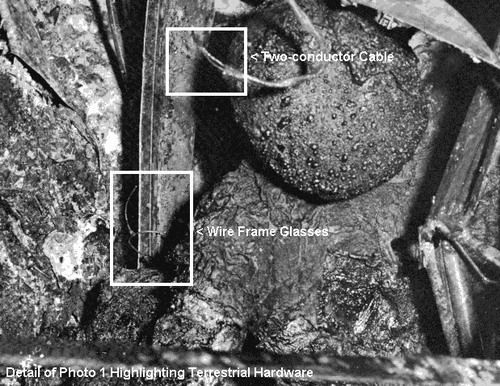Critical UFO Events That Changed the Narrative Around Extraterrestrial Life

The fascination with unidentified flying objects (UFOs) and the possibility of extraterrestrial life has captivated humanity for decades. Various events have significantly influenced public perception and the narrative surrounding UFOs. This article explores some of the most critical UFO events that have changed the discourse on extraterrestrial life.
The Kenneth Arnold Sighting (1947)
On June 24, 1947, pilot Kenneth Arnold reported seeing nine disk-shaped objects flying near Mount Rainier, Washington. This sighting is often credited with igniting the modern UFO phenomenon. Arnold's description of the objects as "flying saucers" captured the public's imagination and led to a surge of similar reports across the United States. His sighting prompted widespread speculation about the possibility of extraterrestrial origins, marking a pivotal moment in UFO history.
The Roswell Incident (1947)
Just weeks after Arnold's sighting, the Roswell incident further fueled UFO speculation. In July 1947, the U.S. military announced the recovery of a "flying disc" near Roswell, New Mexico. However, the military quickly retracted this statement, claiming it was a weather balloon. This contradictory narrative led to rampant conspiracy theories and speculation about a government cover-up of critical UFO events. The Roswell incident remains one of the most famous and debated UFO events in history.
The 1952 Washington, D.C. UFO Flap
In July 1952, a series of UFO sightings over Washington, D.C., captured national attention. Military jets were scrambled to intercept the unidentified objects, which were tracked on radar but eluded capture. The incident prompted a congressional hearing and heightened public interest in UFOs. The government’s inability to provide a satisfactory explanation for the sightings led many to speculate about the existence of extraterrestrial life.
The Condon Report (1969)
The Condon Report, commissioned by the U.S. Air Force, aimed to investigate UFO phenomena scientifically. Released in 1969, the report concluded that there was no evidence to support the extraterrestrial hypothesis (ETH) and recommended the discontinuation of UFO investigations. This report was met with mixed reactions; while skeptics hailed it as a definitive debunking, many enthusiasts argued that it dismissed credible evidence and reinforced the belief in a government cover-up.
The Phoenix Lights (1997)
On March 13, 1997, thousands of people in Arizona reported seeing a massive V-shaped formation of lights moving silently across the night sky. The Phoenix Lights incident garnered significant media coverage and public interest. While the military later claimed the lights were flares from training exercises, many witnesses remained unconvinced, leading to ongoing debates about the nature of the event and its implications for extraterrestrial life.

The Tic Tac UFO Encounter (2004)
In November 2004, U.S. Navy pilots encountered a mysterious flying object off the coast of California. The object, described as a "Tic Tac," exhibited flight capabilities beyond known human technology. The incident was captured on infrared video and later confirmed by the Pentagon, leading to renewed interest in UFOs and calls for transparency regarding government investigations into unidentified aerial phenomena (UAP). This event marked a significant shift in how the military and government approached the topic of UFOs.
The Pentagon's UAP Task Force (2020)
In 2020, the U.S. Department of Defense established the Unidentified Aerial Phenomena Task Force to investigate sightings of unidentified objects by military personnel. This move signaled a shift in government policy, acknowledging the need for a systematic approach to understanding UAPs. The release of videos and reports by the Pentagon has reignited public interest in UFOs and the possibility of extraterrestrial life, leading to calls for further investigation and transparency.
Conclusion
Critical UFO events have played a significant role in shaping the narrative around extraterrestrial life. From the initial sightings in the late 1940s to recent government investigations, these events have fueled public curiosity and speculation. As technology advances and more information becomes available, the discourse surrounding UFOs and extraterrestrial life continues to evolve, leaving many questions unanswered and inviting further exploration into the unknown.
- Art
- Causes
- Crafts
- Dance
- Drinks
- Film
- Fitness
- Food
- Juegos
- Gardening
- Health
- Home
- Literature
- Music
- Networking
- Other
- Party
- Religion
- Shopping
- Sports
- Theater
- Wellness


